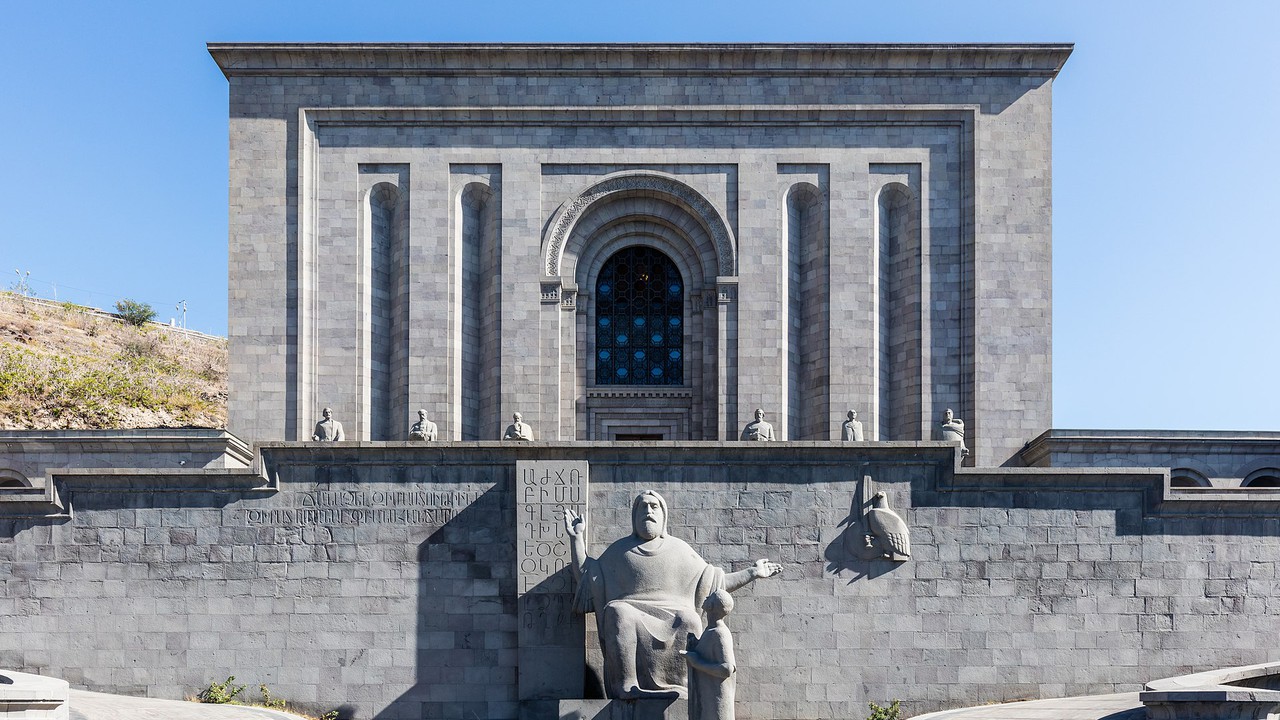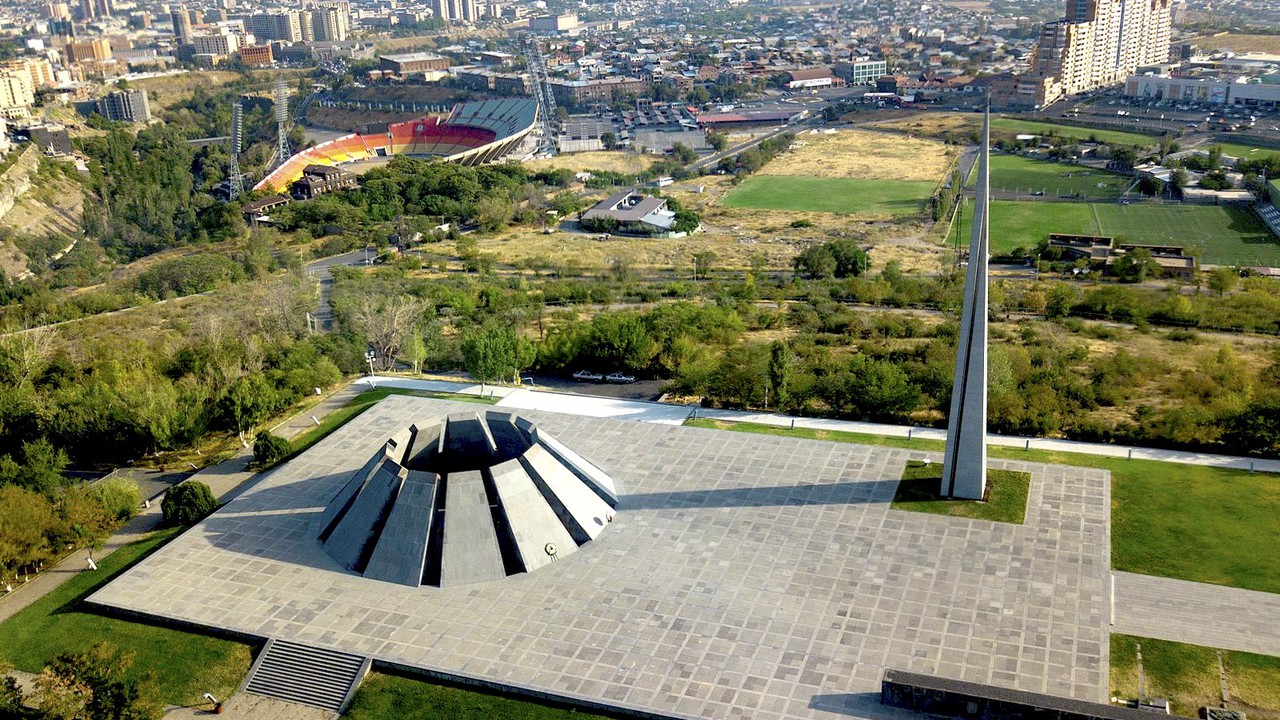UNIQUE PLACES

SHENGAVIT SETTLEMENT
IV-III millennia BC
State index: 1.11.2
Located in the southwestern part of Yerevan, atop and along the slopes of a hill-promontory on the left bank of the Hrazdan River, Shengavit now resides on the southern side of Lake Yerevan. This archaeological site includes a multi-layered residential area and a burial ground.
Shengavit stands out as a significant monument of the Early Bronze Age,
holding universal value. Established in the IV millennium BC, it
thrived for over a millennium until around the middle of the III millennium BC.
Between 2900-2700 BC, stone walls, 2-4 meters wide, were constructed around the
hilltop. Shengavit evolved into a large, continuously developing center for
agriculture, animal husbandry, metallurgy, religion, and trade, surrounded by
arbaynak villages. Before the construction of Lake Yerevan, the area where
Shengavit stands was occupied by the village of Koghb, along with its gardens
and cultivated lands. During the Early Bronze Age, the Armenian Highlands
witnessed a remarkable development of irrigated agriculture, as evidenced by
the abundance of agricultural tools unearthed at Shengavit.
From all layers of the ancient site, stone tips of hoes, hundreds of
flint blades of sickles, which were attached to wooden or bone bases with
bitumen, boat-shaped vessels made of porous basalt, beaters made of river
stones, sanders, mortars, etc., were found.
Archaeological excavations at Shengavit began in 1936-1938 and have
continued up to these days. The site was found to have housed at least 500-700
houses, with an estimated population of 5000-6000. Various craft activities
were documented, including metal and stone processing workshops, as well as
grain storage wells. Shengavit’s significance extends to its architectural
remains and complex religious practices. A temple from the second half of the III
millennium BC was unearthed in 2012, underscoring the site’s status as one of
the renowned urban settlements of the Ancient East.
Excavations revealed a defensive structure comprising three-column
retaining walls reinforced with rectangular masonry towers on the northern and
western sides, facing the Hrazdan gorge. Notably, a 30-meter-long,
1.5-meter-high secret passage, constructed with slabs and covered with
earth, descended to the Hrazdan River (III millennium BC, state index:
1.11.2.1) through one of these towers.
Outside the town’s protective walls, in the abandoned suburb, lies a burials
dating back to the first half of the III millennium BC. Around 15 burials have
been discovered so far, revealing widespread practices of dismemberment. The
presence of jewelry and beads made of gold, silver, bronze, sardine, jasper,
marble, travertine, limestone, tuff, bone, seashells, terracotta, and glass
found in the tombs reflects deep social stratification. Among the findings from
these tombs is a phallus dating back to the III millennium BC, currently
displayed in front of the museum. This stone artifact, measuring 210 x 60 x 40
cm, features a phallic finish and is made of gray tuff. Phallus cult,
associated with male fertility cults, was prevalent in the early agricultural
and early Bronze Age cultures of the Old World, including the Shengavitian or
Kur-Araksian culture, as evidenced by sexually emphasized symbols in male
figurines and relief sculptures of clay cultic hearths.
The Scientific Research Center of Historical and Cultural of Heritage” SNCO
Yerevan Municipality








